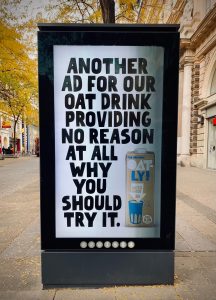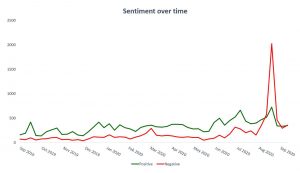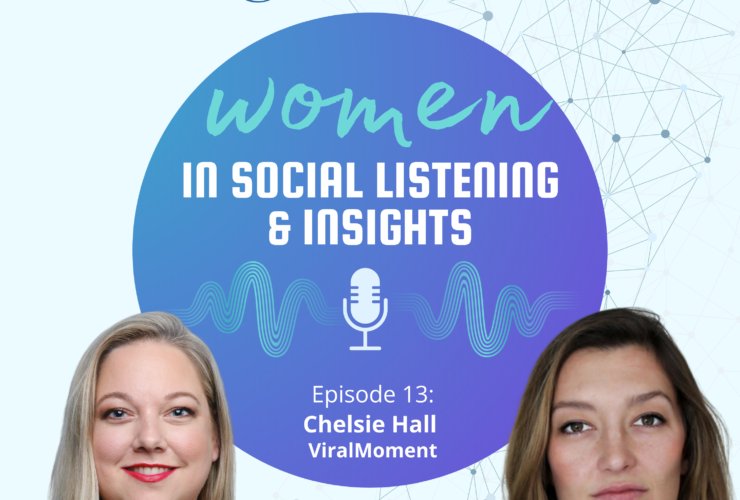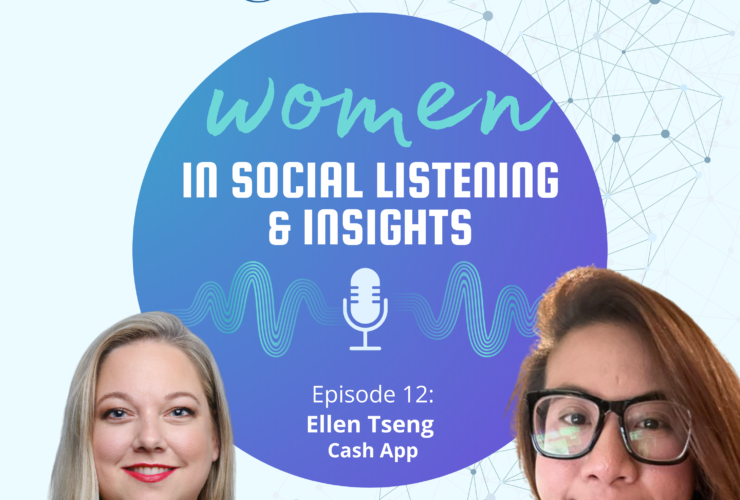Riding high on the sustainable food movement, Swedish vegan brand Oatly has enjoyed a period of rapid international growth. Through their tongue-in-cheek marketing, combining traditional product promotions with witty off-topic observations and forthright statements about the company’s determination to tackle climate change, Oatly gained a cult following of ethically conscious shoppers who proudly wore the badge of the Post Milk Generation. But it doesn’t take much to see the tide turn and the brand that managed to bridge the gap between activist and mainstream consumerism is now facing a backlash. The reason? Their decision to sell a 10 percent stake of the company to controversial investment firm Blackstone. Public supporters of the Trump campaign and with alleged ties to Amazon deforestation, Blackstone was, at best, considered a “strange choice” for Oatly to partner with. The more outspoken critics accused the company of “selling its soul” and called for a boycott of the brand.
Four months after the news of the investment broke, the company’s uphill struggle to win back consumers’ trust looks steep. Despite avid attempts to defend the funding as an opportunity to “[make] the most change possible”, industry experts predict the brand will never return to its glory days of alt-milk world domination. Instead, they risk losing out to up-and-coming rivals who have capitalised on the now mainstream plant-based food trend that Oatly pioneered. Although Oatly might have understood the PR risk involved and considered it a gamble worth taking, the questions remain: How, when their marketing had been so on point (even dubbed ‘genius’) did they get the execution of the Blackstone investment announcement so wrong? What could they have done differently? And, crucially, what can they do to bounce back?
Using the case of Oatly to illustrate why a data-driven approach to keep a close eye on industry movements, and an ever-closer eye on your target audiences, is the be-all and end-all when it comes to building and maintaining a credible brand.
Disruptor mindset and brand activism
Brand activism is defined as a business’ efforts to promote political, economical and/or environmental reform to improve society. Also known as cause marketing, it’s an approach that has become the foundation of many FMCG brands’ communication strategy, It’s also an area where many brands have struggled after finding themselves unprepared for the fast-moving nature of social media where a single critical tweet can snowball into a million more in a matter of hours. There are numerous examples of companies that, after failing to appear socially conscious enough to appease savvy consumers, have become subject to ridicule and accusations of ‘woke-washing’.

Google trends: Global searches for “Oatly’” from 1st July 2016-1st July 2020, before the Blackstone investment was announced.
Brand affinity and organic word-of-mouth
Yet, through their branding campaigns, Oatly managed to steer clear of this peril for years. The brand convinced eco-anxious shoppers of their ethical credentials and genuine belief that they could change the world by getting more people to ditch dairy in favour of plant-based. Rather than putting consumers off, or confusing the message, Oatly’s irreverent attitude combined with their humorous and ‘nonsensical’ advertising proved a recipe for success. From vegan evangelists to baristas, from the US to Asia, people came together to proselytise about their hip new mylk discovery and word spread about the quirky newcomer.

Oatly had nailed their audience and were able to reap the rewards of the strong brand affinity. The Oatly community enjoyed a feel-good buzz that shone through not only on their own channels but also in fans’ posts. With hashtags such as #NotYourMomNotYourMilk and #DairyIsScary, Oatly drinkers shared photos of their morning ‘cappoatccino’ with their friends and followers. In a world where brands pay top dollar for influencers to help boost word-of-mouth (WOM) recommendations, the organic proactivity of Oatly’s fans was gold dust.
Positioning itself as a challenger brand, Oatly made people stop and think about their habits by offering them the choice to make a small yet important contribution towards improving the food industry as a whole – opting out of dairy in favour of oats. By inviting consumers and companies alike to join the debate around food and carbon footprint, the brand put plant-based on the agenda and arguably played a key role in the transformation of veganism from something kooky and niche to a mainstream diet alternative. There’s no denying that Oatly’s disruptor mindset won them many critics, but overwhelmingly, attitudes on social media were positive.
From cult to cancelled: Oatly’s communication misstep
Then in July 2020 the wind changed. In a press release, Oatly announced that they had received funding of $200 million from investment firm Blackstone in exchange for a 10 percent stake of the company. The impact of the news was instant and, while Oatly most likely understood the deal would fail to impress their most hardcore fans, they were clearly unprepared for the enormous backlash that followed. Negative mentions grew by over 500% virtually overnight as people flocked to social media to learn more about the unexpected deal and express their disappointment in Oatly.
Positive and negative mentions of Oatly . The spike in negativity reflects the reactions to the Blackstone announcement. (Swedish and English, global coverage.)
Oatly was still busy dealing with the aftermath of the announcement when an even harder blow struck in early September. A Twitter thread, linking Blackstone to a controversial Brazilian infrastructure investment that has been accused of contributing to deforestation in the Amazon, appeared and quickly gained momentum (Blackstone denies the allegations). The situation was further aggravated by claims that the equity firm’s CEO is a loyal supporter of Trump and a major donor to the president’s campaigns. It wasn’t long before Oatly once again began to trend for all the wrong reasons.
oatly isn’t ethical …? i’m so disappointed😔it’s as if we’re living in some capitalist society with no ethical consumption😤don’t text
— jorja (@jorjadixon) September 1, 2020
As the world’s biggest landlord, they are fueling the housing crisis, very much so here in LA. How does their destruction of the Amazon further the plant based movement? I know you’re just a social media person, but no, I will not keep enjoying @oatly milk and u should quit. 🚮
— Another Adam Smith (@AdamOfTheSmiths) September 1, 2020
why did oatly do that??the institutions that i lean on have crumbled
— beatrice (@beaz0ra) September 3, 2020
Overnight, Oatly had gone from a quirky staple favourite of ethically conscious shoppers and coffee lovers to a ‘profit-hungry’ corporation willing to “sell out to the highest bidder”. It has been described as a textbook example of what happens when a purpose-driven business loses sight of why consumers first bought into the brand as soon as Big Money enters the picture. While it may turn out that Oatly was genuinely right to defend its decision as a chance to “change the world of finance” and “expand their sustainable mission”, experts have argued that the news of the investment could have been delivered in a way that would have caused less outrage and more acceptance – perhaps even excitement.
Social listening and PR best practice
Past: How could social listening have helped Oatly avoid the PR disaster?
-
Brand tracking
Through brand tracking, businesses can monitor digital shifts in attitudes and perceptions to their brands over time. This would have helped Oatly be informed by reactions to previous campaigns and events. Because, although the Blackstone news resulted in the biggest wave of negative reactions in Oatly’s history, it wasn’t the first time they had suffered a PR setback. In 2018, the company faced a backlash when it announced that it was selling their by-product to pig farms. Oatly argued that it was a “sustainable option” that “eliminated unnecessary waste”, but the vegan community took to social media to call out the company for acting at odds with their mission to promote a plant-based diet. In 2018, Oatly once again found themselves in hot water. Their “Spola mjölken” (“Flush the milk”) campaign, which blamed the dairy industry for its contribution to global warming, was met by furore in the company’s native Sweden. At the time, Oatly had just gained a Chinese shareholder, and critics accused Oatly of hypocrisy, pointing to the soaring CO2 emissions generated by China. Through painstaking PR efforts, Oatly managed to recover from both of these episodes. But the events, coupled with the company’s exponential growth, should have served as a red flag about the reactions the Blackstone announcement would trigger. Tracking data would reveal the minutiae of how the events rolled out; from what sparked the controversy, the driving forces of the criticisms, attitudes by stakeholder groups and the commonalities of the most effective PR activities.
-
Trend analysis
By taking into consideration the forces that shape consumers’ behaviours and preferences, brands have a greater chance of identifying opportunities as well as perils. Although aware of the PR risk, it’s possible Oatly expected any controversy to quickly blow over as it had after previous campaign and communication mishaps. But several external factors meant the situation spun out of their control. Through trend analysis, Oatly would have been better placed to form a holistic overview and spot these hazards. For example, as a consequence of the global pandemic, one major shift in consumer behaviour that brands need to be conscious of is the huge uptake of social media usage. Seeking new ways to keep connected, people are spending more time online than ever and, as a result, they’re increasingly prone to follow and engage with new content. In other words, the pandemic has created the ultimate climate for juicy stories to go viral. By keeping a close eye on all areas and industries related to their brand, Oatly would have been better equipped to predict likely reactions. Insights from trend analysis and brand tracking could have been used to form the communication strategy, saving them from the sporadic firefighting that they had to resort to during peak crisis.
Now: What is Oatly doing to weather the storm?
-
Consistent cross-channel message
In early September, Oatly addressed the criticism on their social media channels. Encouraging their followers to “read the full story”, the posts explained their reasons for signing the deal. Emphasising that, rather than abandoning their core values, the funding will “strengthen the global sustainability movement substantially”. The message of staying true to their original mission is also communicated on Oatly’s website. A separate section on their website was set up in reaction to the response and has been quoted by third party media sites. While it may not be enough to win back their entire fanbase, it keeps the message consistent and clear.
-
Tending to community
Few, if any, of Oatly’s posts in the last couple of months have been free from comments from (ex-)customers expressing their dismay about the Blackstone funding. Oatly have been responding to these individual comments, recognising the poster’s feelings. They also use this as an opportunity to express their determination for long-term societal change and how the funding will help make this happen. While responses like these may be too little, too late for the most resolute critics, it will help persuade those in doubt to stick with the brand. It also shows that Oatly value their community and are dedicated to keeping an open dialogue with consumers, come rain or shine.
-
Product launch to disrupt negative trend
Oatly’s October campaign for their new product launch has served as a timely distraction. Broadening the products offering gives them a competitive advantage, plus the positive buzz around the new Oatgurt line helps counter the negative publicity. With a look and feel that follows Oatly’s signature style, the campaign appears to have hit home with many followers.
Future: How can social listening form part of a long-term strategy?
In addition to Brand Tracking and Trend Analysis, which social intelligence-based methods should form part of Oatly’s long-term strategy?
-
Competitor Analysis
As plant-based has gone from niche to mainstream, Oatly is now facing increased competition from rival brands who will use the backlash as a chance to capture dithering shoppers. Additionally, the dairy industry arguably poses more of a threat as, in many people’s eyes, Oatly can no longer claim a moral high ground when it comes to fighting climate change. Through competitor intelligence, Oatly will gain a comprehensive vision of the strengths and weaknesses of current and potential competitors. For any organisation, this helps identify opportunities and threats for your organisation and predict your competitors’ initiatives, future plans and strategies.
-
Audience Insights
Oatly social media following has, after years of steady growth, plateaued rather than shrunk in the Blackstone announcement aftermath. This means that their audience profiles remain more or less the same in terms of demographics, habits and preferences.

Oatly need to be attentive of their followers and let insights about the Who, What and Where of their audience groups help them maintain, and in some cases rebuild, a close relationship with them. Publicly acknowledging customers’ reactions to the Blackstone investment forms an important part of this. When creating new content, the audience profiles will be of crucial help in creating tailored and personalised messaging. True for any brand or industry, consumers are more likely to be receptive towards content when they can relate to it.
Takeaways
Whether or not Oatly will convince the world they’re still the same “unrelenting oat punks on a mission” remains to be seen. But regardless of the outcome, the company’s PR ordeal offers some key learnings relevant for all brands, independent of size or industry.
- Always bear in mind the company mission statement in any communication activity, regardless of how small. Consistency and clarity is key; ambiguous statements risk confusing target audiences and, worst case, trigger accusations of fakery. Remember, online grassroots movements are powerful and can cause even the smallest communication misstep snowball into a full-blown PR crisis.
- Know your audience, inside and out. Central to any marketing strategy, a deep understanding of who your customers are (demographics, behaviours, preferences) should inform how and where you reach your target groups. Learn more about our Audience Insights services here.
- Keep one step ahead. Use brand tracking and trend analysis to better predict industry movements and use these insights to plan marketing output – as well as any major business decision. Contact us today to find out more about how our Brand Tracking & Performance can secure your competitive advantage.







Permalink